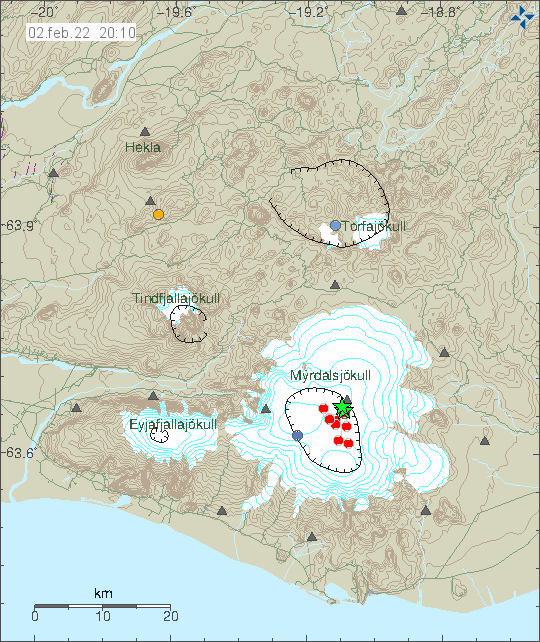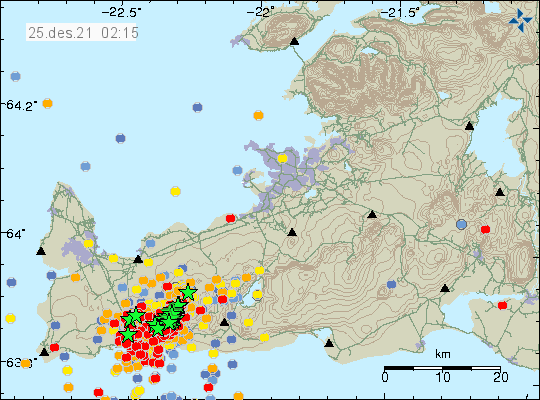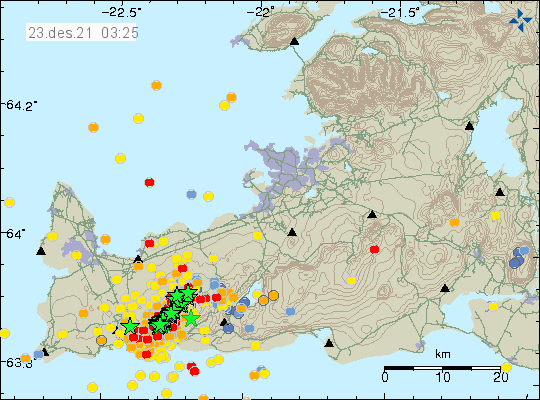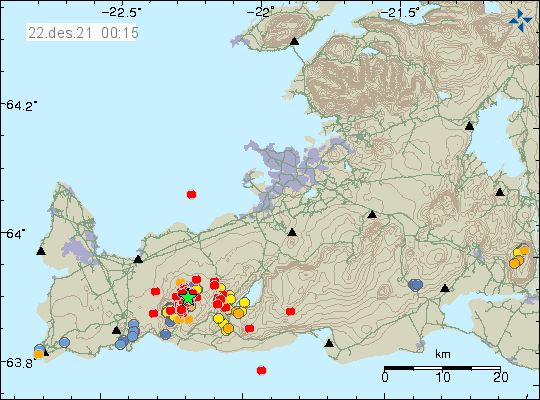At 10:11 UTC today (22-February-2022) an earthquake with magnitude of Mw4,8 (Icelandic Met Office) or Mw5,0 (EMSC) took place in Bárðarbunga volcano.
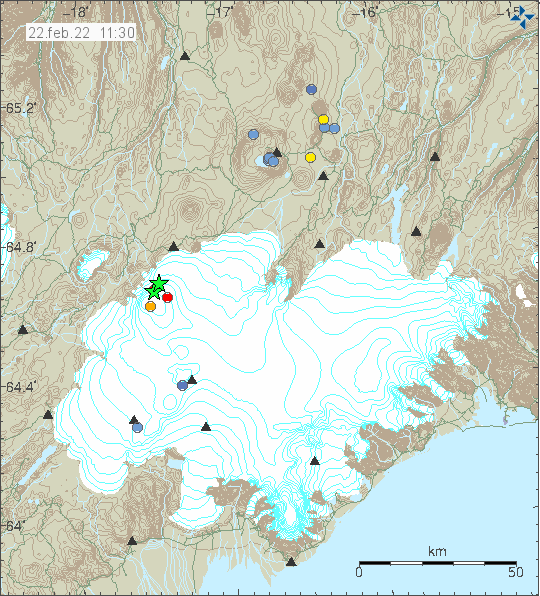
Yesterday (21-February-2022) at 14:08 UTC there had been a earthquake with magnitude of Mw3,0 in Bárðarbunga volcano, along with few smaller earthquakes. This earthquake activity shows that Bárðarbunga volcano continues to inflate after the eruption in the year 2014 to 2015. It is impossible to know when next eruption happens in Bárðarbunga volcano, it might be 10 years from now or 100 years from now. Last eruption in Bárðarbunga volcano before the 2014 eruption was in the year 1902.
Donations
Please remember to support my work with donations. They help me from not being broke. Thanks for the support. 🙂

